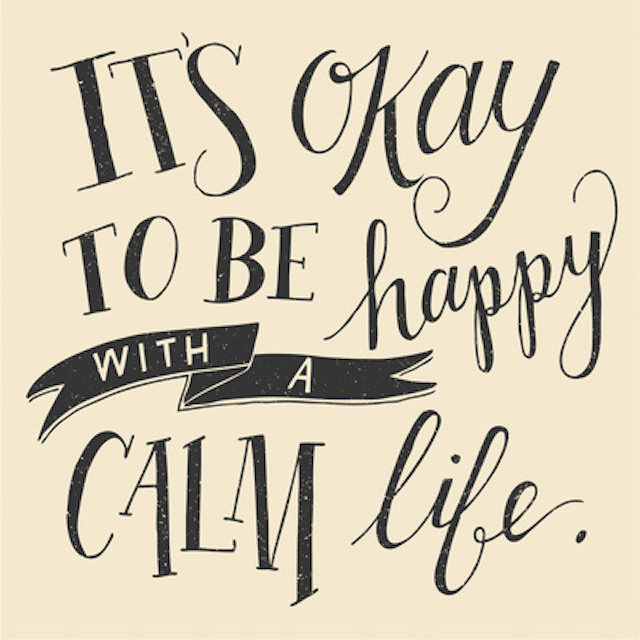How I Came to Yoga.
Like many modern yogis, I came to yoga with a tenacious desire to move my body in cool ways. I wanted to sweat. I wanted twist and turn. I wanted to flow and jump and go upside down and fly and play—all the words that get thrown around in the modern yoga class.
But I also came to yoga with an inherent idea that I wanted to change in some way.
Many of us come to yoga because we think of yoga as relaxing, peaceful and calm.
Seared in our minds is the idea of the yogi walking around in harem pants and mala beads burning sage to waft away the bad energies. This yogi, we imagine, is foreign and inaccessible to us and yet we see something in them that we want.
It’s likely that air of calm.
I saw these things: the twisty, turny, bendy, upside-downy yogi and the calm, regal, peaceful yogi and I thought, “Well then, that’s how you do it.”
So, I went to my power vinyasa classes and I sweat, panted, huffed and puffed. I worked hard to get my chaturanga and to float my thighs off the ground in upward dog. Eventually I practiced so much that I was able to do these things effortlessly and I felt weightless in my practice.
Okay. I got the movements down, but where was the peace?
I would finish my practice and feel good, like I was a wet cloth that had just been wrung out. But I couldn’t say it felt any different than when I would go for a run. It certainly calmed me down but I didn’t receive the illusive instant-peace and yogi attitude.
I knew there had to be more.
This type of yoga helped me get into my body, but I wanted to get out of my mind. I still wanted to change.
In my yoga therapy studies, I’ve now made sense of my early experiences with yoga. I understand how I was finally able to achieve the benefits of yoga.
The Benefits of Yoga.
Studies have shown that the benefits of yoga include increased flexibility, decreased levels of anxiety and depression, lower resting heart rate, lower blood pressure and lower levels of cortisol (the infamous stress hormone.)
Yoga can even help reduce the effects of traumatic experiences like PTSD.
Whether it’s helping a heart patient recover through the Cornish method which incorporates yogic practices such as posture, breathing exercises and meditation or whether it’s helping a person with severe anxiety to see a reduction in the amount of panic attacks, we hear of the benefits of yoga all the time.
But here’s the catch—we do not get all of the benefits of yoga if our heart rate increases.
“What?!”
Yeah. That was me when I learned this. But it makes sense. Here’s why.
How Yoga Works.
Yoga helps lower our blood pressure and release cortisol by accessing our parasympathetic nervous system. As humans, our nervous system operates in two, extremely simple modes: sympathetic and parasympathetic responses.
Sympathetic responses are in charge of our “fight-or-flight” mechanism and they prepare the body for stressful and emergency situations. It increases our heart rate and muscular strength, dilates our pupils and even makes our hair stand on end.
More simply it’s that “I need to be at work in five minutes and I’m stuck in traffic,” feeling. Or the “I’m alone at home and I’m pretty sure I heard a noise,” feeling.
Our parasympathetic responses are in charge of our body in more ordinary situations like watching T.V. or taking a shower. It conserves and restores. It slows down the heart rate and decreases blood pressure and is in charge of functions like digestion. This is that “Ahh, I’m on the beach with no worry in the world,” feeling.
Think of how many times you have the “stuck in traffic feeling,” in a day. Now think about how many times you have the “ahh, no worries,” feeling in a day. It’s likely that you, more often than not, feel stuck in traffic significantly more than you feel like your hanging out on the beach.
One could even argue that in today’s world we are in fight-or-flight mode all the time. (Though we are not actually—-we’re still digesting and sleeping—it can certainly feel like it.)
The constant level of stress, noise and information being thrown at us, renders many of us with hypersensitive nervous systems: any little thing will cause us stress. In other words we have constant sources of negative stress being fed to us at our jobs, in our homes and on our screens and very little moments where we can truly access our conserve-and-restore processes governed by the parasympathetic nervous system.
This how yoga works: It’s able to give us lowered heart rate and blood pressure and the overall feeling of “ ahh,” by accessing our parasympathic responses.
How a Restorative Yoga Practice Helps Achieve the Benefits of Yoga.
A yoga practice where we are breathing heavily and increasing our heart rate and blood pressure can be a good thing, for those of us who need aerobic activity.
But we must also remember that we will not get the full benefits of yoga if our breathing is unsteady or if we’re adding more negative stress to our bodies. (Though I will not doubt that the experienced sages of yoga probably could float through chataranga up to handstand while maintaining a steady heart rate but that, my friends, is not me—or many of us—for that matter.)
This is why restorative yoga can be such a gem.
Many of us already go to the gym, run around and get our heart rates up all day.
Very rarely do we allot one hour of our day to gentle movements, slow, relaxed breathing and deep relaxation.
Many times we’re so caught up in doing something productive: “I have to lose weight, read that article, watch that show.” We’re always taking in.
The restorative yoga class exists to allow us not to take in but rather let out. To find those positions that truly make our body feel good and cared for and to coax ourselves away from running in fight-or-flight mode.
In a restorative class we tell our bodies and our minds, “It’s okay, you can relax. I’m giving you the space to just be.”
Even greater—studies also show that we can receive the benefits of yoga by practicing posture, breathing and meditation for one hour once a week.
Seriously. Once a week.
Of course, the more that we give ourselves this time in a week, the better we will get at being able to access this relaxation.
Just know that we don’t have to give up our vigorous vinyasa practice or our intense cardio sessions. We certainly don’t have to start wearing linen harm pants and quit our jobs to move to ashrams. We simply have to give ourselves the space to access the parts of our mind and body that truly want us to have peace.
Because in the same way activity propels us forward, so does rest. It’s science.
~
Relephant read:
A Perfect Stranger. {Poem}
Author: Carmelene Siani
Editor: Ashleigh Hitchcock
Photo: flickr







Read 1 comment and reply